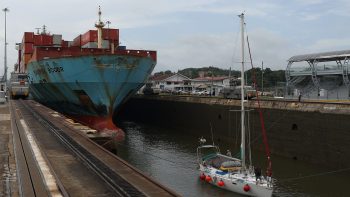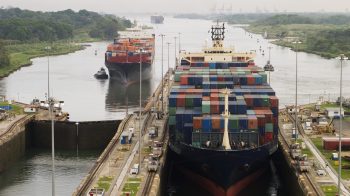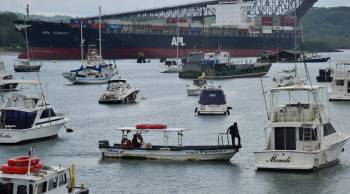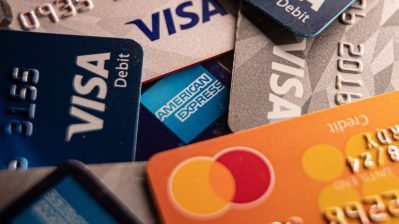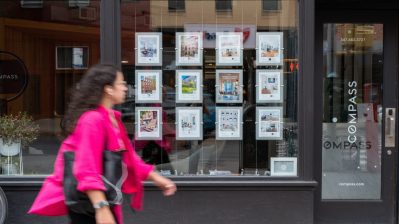Cost of shipping extra
TEXT OF STORY
KAI RYSSDAL: Almost 70 percent of all the cargo that comes or goes from this country winds up passing through the Panama Canal. It’s cheaper to slip through that 51-mile passage than to send all those goods down around the bottom of South America. But as the global economy expands, so too do the container ships that carry those goods.
Work’s about to begin on a project to make the canal big enough for its new super-sized customers. A project that comes with a super-sized price tag. Lorne Matalon reports now from Panama on who’s going to pay it.
LORNE MATALON: Panama Canal handles 6 percent of world trade every year. Until the explosion of Asian economies, ships known as Panamax — the largest vessels that could fit into the Canal’s locks — were the standard of maritime shipping.
MAX NEWMAN: OK right now, the vessel that this tug is assisting, the vessel is right now approaching the east side of the Miraflores Locks.
Max Newman heads the Canal’s tug operations. His crews nudge ships through the locks with often no more than a few inches of space to spare. Now carriers can pay upwards of a quarter million dollars to make the crossing, but the Canal is missing out on even bigger fees from oil tankers, liquefied natural gas carriers and bulk carrier known as post-Panamax. Those ships just can’t fit through.
[SOUND: Radio transmissions]
Port directors from New England to Florida are salivating at the prospect of off-loading the bigger, post-Panamax ships, which have to now end their journeys from Asia on the West Coast. With bigger locks, Japanese cars and Korean televisions will have a more direct route to the East Coast — avoiding the cost of shipping goods from west to east by rail.
To help pay for the new locks, higher transit tolls are being phased in starting this summer. They’ll average 10 percent per year for three years. For now at least, Panama won’t issue bonds.
Tug operations chief Newman says the bond option was never seriously considered. After decades of control by the U.S., he says this is the time for Panama to finance the project itself.
NEWMAN: And now that we own the Canal, it would be an historical error to do any business decision that would put in hands of others the ownership of the waterway.
JOE COX: There is an obligation on their part to explain why that model is being used versus a model where you would issue bonds.
Joe Cox leads the Chamber of Shipping of America. That’s the trade group representing 85 percent of the U.S. merchant fleet. He’s not happy his members are being asked to pay higher tolls now for a project that will benefit their competitors in the future.
COX: Bonds are a way of spreading out the cost with current folks plus the cost of those down the road. It’s a financing model that allows for those who are gonna benefit in the future from the change to also fund that infrastructure improvement.
The Canal’s chief financial strategist, Jose Barrios, has received more than 20 requests from industry players asking for a delay in toll hikes. But he makes no apologies for using a financial model that he says will benefit shippers — many of whom may ultimately have to build post-Panamax vessels to remain competitive.
JOSE BARRIOS: So I find it very hard to accept that my clients would tell me how I’m gonna do my investment. I mean, nobody does that. I don’t go over there to any of the shipping lines and tell them what to do, you know, with regard to capital investments.
Carriers shipping from Asia to the East Coast do have an option: the Suez Canal. They won’t pay higher tolls, but it would take several more days to complete the journey — doing little for the prices you’d pay for the cargo those ships bring in.
For Marketplace, I’m Lorne Matalon on the Panama Canal.
There’s a lot happening in the world. Through it all, Marketplace is here for you.
You rely on Marketplace to break down the world’s events and tell you how it affects you in a fact-based, approachable way. We rely on your financial support to keep making that possible.
Your donation today powers the independent journalism that you rely on. For just $5/month, you can help sustain Marketplace so we can keep reporting on the things that matter to you.



